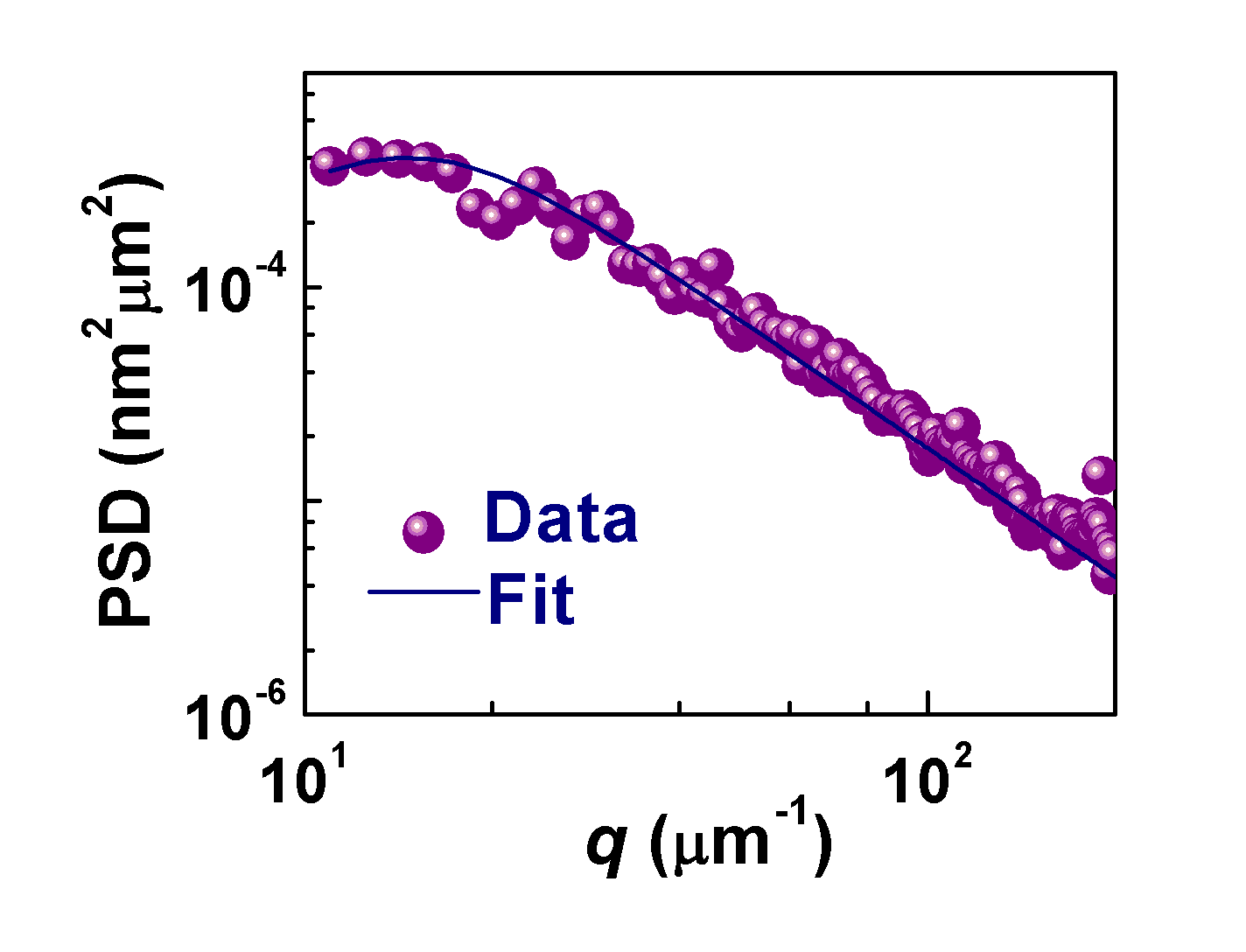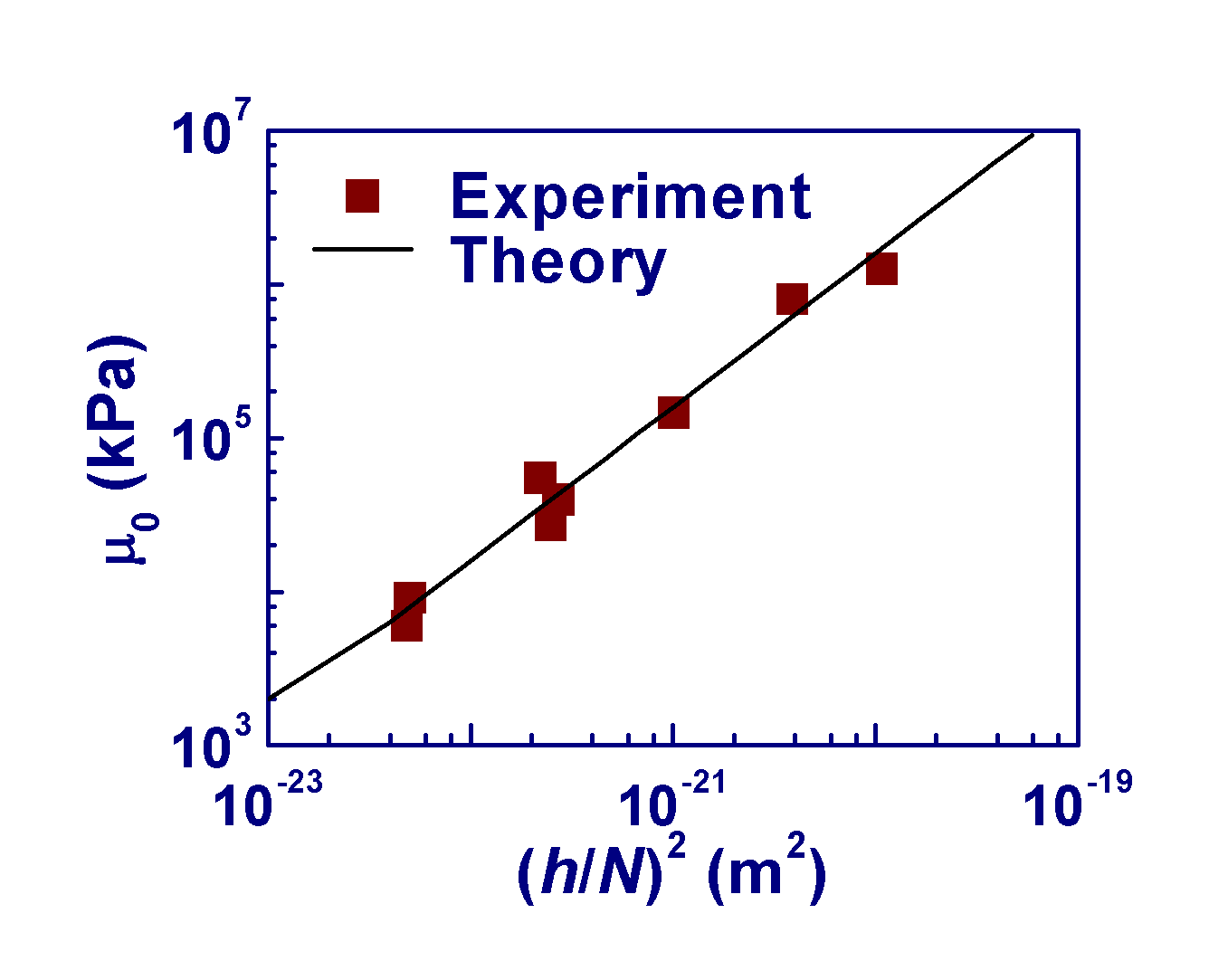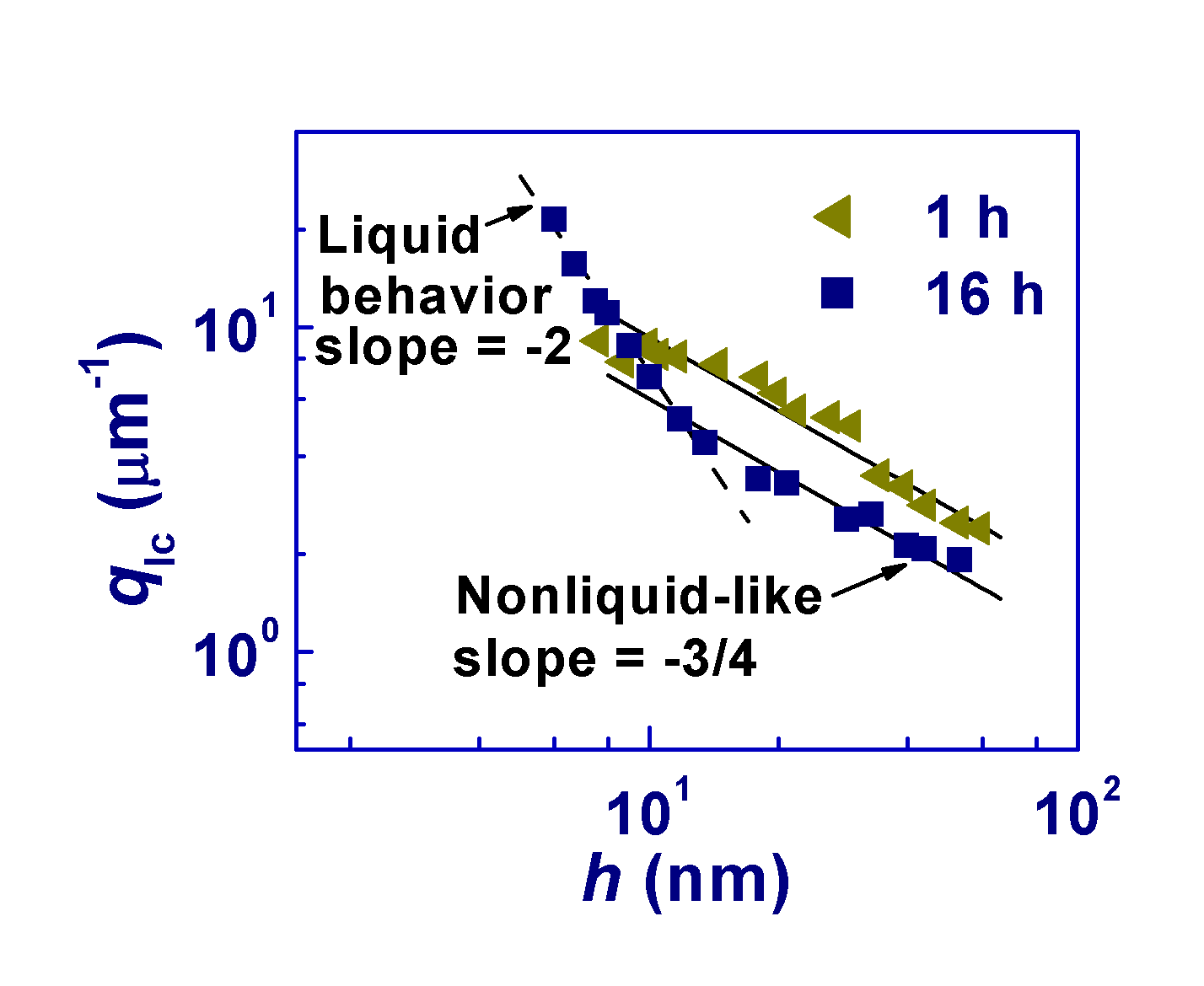Reports: AC5
47882-AC5 Shear Modulus of a Molten Polymer Brush
This project aims to address several reported findings that molten polystyrene monolayer films deposited on silicon demonstrated surface structures indicating the films to possess a shear modulus -- a property unexpected for liquids. This observation was interpreted to arise from the polymer chains adsorbing strongly to the substrate surface, producing essentially a Guiselin brush, i.e., one in which the brush chains have the same conformation as that of molten polymers, but at where the brush chains touch the substrate surface, they form a grafted point. This suggestion is illuminating, but not without uncertainty. In particular, it implies that the shear modulus of a Guiselin brush is only ~1/10000 times predicted by Fredrickson et al.
In this reporting period, we performed experiments that verified Fredrickson et al.'s theory, which though was published 17 years ago, had been largely unchecked. Separately, we obtained results revealing that short-chain, simple-liquid polymer films also exhibit the reported solidlike behavior if they are measured before they have reached equilibrium. A brief description of these findings will be given in Section A below. This will be followed by a narrative on the impact of this project on the participants.
A. Major Findings
A.1. Shear Modulus Polymer Brushes
In this study, we first developed a protocol to prepare the sample films proposed for this study, namely polystyrene (PS) brush grafted on silicon silanized with 3-ainopropyltrimethoxysilane (APTMS). The APTMS treated surface was confirmed to interact weakly with the PS segments by observing that it dewets polystyrene homopolymer readily at temperatures (~130 oC) above the glass transition temperature of 100 oC. The brush material used is PS end-functionalized with a carboxylic group (PS-COOH). To form the brush films, we spin-coated thick films (~200 nm) of the PS-COOH on top of APTMS treated substrates then extensively annealed the them at 180 oC for 24 h. Dehydration occurred between the COOH and NH2 groups resulting in strong ester bonding between the PS and the substrate. The unreacted brush chains were rinsed off by a copious amount of toluene. Measurement by ellipsometry showed that the brush films are usually ~2Rg thick, where Rg is the radius of gyration of the polymer.
We determined the shear modulus, u0, of the films by measuring their surface spectrum or power spectral density (PSD). Based on the theory of Fredrickson et al. and using literature values for the model parameters, we modeled the PSD by treating u0 as the only fitting parameter. Figure 1 shows a typical fitting result we obtained. Figure 2 shows a plot of the fitted values of u0 obtained from brush films with various molecular weights or degree of polymerization, N. From the result shown, it is apparent that the theory of Fredrickson et al. describes the data very well.
Fig. 1 Power spectral density (PSD) of a brush film. Experimental data are represented by the solid circles. The solid line represents the best fit to Fredrickson et al.'s model.
Figure 2. Comparison between experiment and theory for the fitted values of u0 for various (h/N)2, where h is the thickness of the brush film.
A.2. Solid Behavior in Non-equilibrated Liquid Films
In this work, we demonstrate that insufficient thermal annealing of the films can produce the same solidlike behavior reported in the studies mentioned above, namely exhibition of a slope of ~ -3/4 in a log-log plot of qlc vs. film thickness, h, where qlc is related to the characteristic length scale, lambda_lc, in the surface structure of the films by qlc = 2(pi)/(lambda_lc). Liquid films, on the other hand, should show a slope of -2.
As Fig. 3 shows, all the films we studied exhibit the non-liquidlike behavior when the annealing time was short (= 1 h); but many of them (i.e., those with h < 13 nm) display the liquid behavior when the annealing time was increased to 16 h. Persistence of the nonliquidlike behavior in the thicker films can be understood by the longer length-scales involved in their surface structure (or smaller qlc) that take longer times to evolve. This work has been published in Macromolecules, 41, 8785 (2008).
Fig.3 Log-log plot of qlc vs. film thickness for PS films (Mw = 13.7 kg/mol) spin-coated on silicon upon annealing at 120 oC for 1 h (triangles) and 16 h (squares). The dash line has slope = -2. Both solid lines have slope = -3/4.
B. Impact on the Participants
The results from this project have led to three publications, a new grant award to the PI, and two invitations to the PI to speak, respectively, at PolyFilm 2008: Confined polymer films, Sheffield, UK in September, 2008 and Brandeis University in November, 2008. The experience gained by the postdoctoral fellow, Dr. Yoshihisa Fujii due to this grant support has helped him garner an offer of assistant professorship in Kyushu University, Japan.







